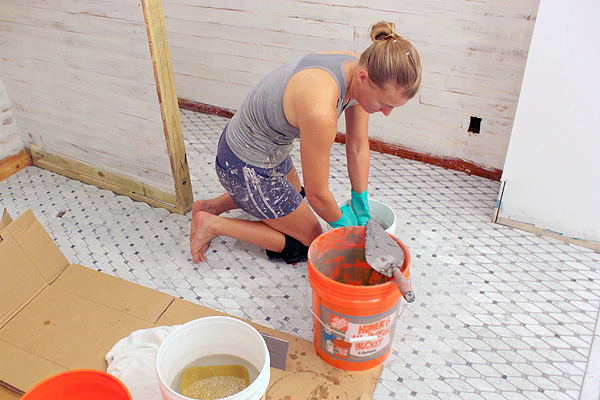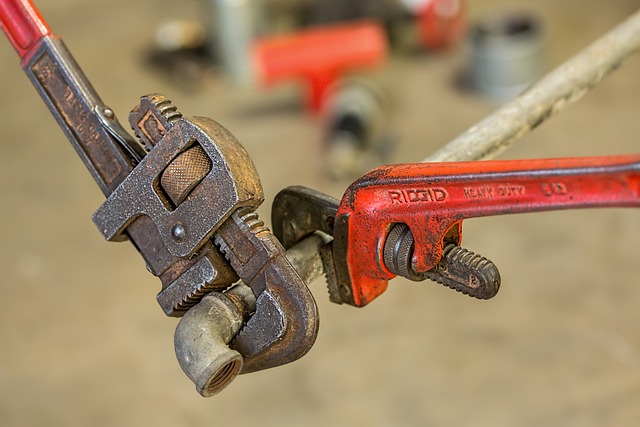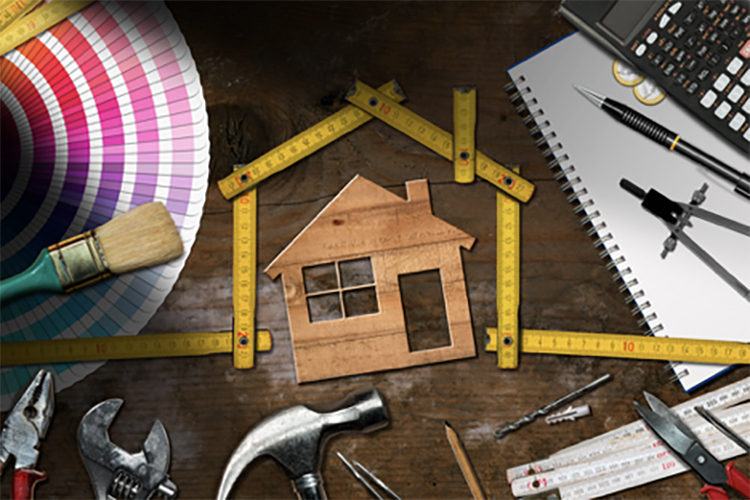
In today's fast-paced world, ensuring the safety and security of our homes has become a top priority.
To decode the intricacies of home safety, this article presents six vital steps that can help you safeguard your living space.
From installing alarm systems to child-proofing, and from carbon monoxide detectors to enhancing door and window security, these measures are designed to provide peace of mind and protect your loved ones and belongings.
Stay informed and take charge of your home's safety with these essential steps.
Alarm System Installation
When considering home security, one vital step to take is alarm system installation. Installing an alarm system in your home provides numerous benefits that contribute to both peace of mind and the safety of your property.
One of the key benefits of an alarm system is the deterrent effect it has on potential intruders. The mere presence of an alarm system can discourage burglars from targeting your home, as they know that their actions will trigger an immediate response.
Additionally, alarm systems come in various types, allowing you to choose the one that best suits your needs. From basic systems that sound an audible alarm when triggered, to more advanced systems that connect to a monitoring service or your smartphone, there's an alarm system type for every homeowner.

Child Proofing
Child proofing your home is essential to ensuring the safety of your children.
One important step is to install electrical outlet covers to prevent accidental electrocution.
Safety gates for stairs are also crucial to prevent falls, especially for young children who are just starting to explore their surroundings.
Additionally, preventing access to hazards such as cleaning supplies, sharp objects, and medications is vital in creating a safe environment for your children.
Electrical Outlet Covers
To enhance home safety and prevent accidents, installing electrical outlet covers is essential. Electrical safety is a crucial aspect of childproofing your home, as children are naturally curious and may unknowingly insert objects into electrical outlets, putting themselves at risk of electric shocks or burns. Outlet covers act as a barrier between children and the electrical outlets, preventing them from accessing the live electrical components.
When choosing outlet covers, opt for ones that are tamper-resistant and meet safety standards. It is important to cover all unused electrical outlets in your home, including those at a lower height that are easily accessible to children. Regularly check the outlet covers for any damage and replace them if necessary.
Safety Gates for Stairs
Installing safety gates for stairs is essential for childproofing your home and preventing accidents. Staircases can be dangerous for young children who are just learning to walk or crawl. To ensure their safety, here are four stair gate options and installation tips to consider:

- Pressure-mounted gates: These gates are easy to install and require no drilling. They use pressure to hold them in place, making them ideal for temporary use or rental homes.
- Hardware-mounted gates: These gates are the most secure option as they are screwed into the wall. They provide a sturdy barrier and are suitable for long-term use.
- Retractable gates: These gates are convenient and space-saving. They can be easily pulled out when needed and retracted when not in use.
- Gate height and width: Measure your staircase accurately to choose a gate that fits properly. Ensure the gate is tall enough to prevent climbing over and wide enough to cover the entire stair opening.
Remember, proper installation is crucial to ensure the effectiveness of the gate. Follow the manufacturer's instructions carefully and regularly check the gate for any signs of wear or damage.
Preventing Access to Hazards
Securing your home goes beyond installing safety gates for stairs; preventing access to hazards is another crucial aspect of childproofing. Child safety is a top priority for parents, and taking steps to minimize potential dangers is essential.
One important area to focus on is fire prevention. Ensure that all fire extinguishers are easily accessible and that smoke detectors are installed in every room, including bedrooms. Keep matches, lighters, and other flammable items out of reach of children.
Install safety covers on electrical outlets to prevent electrocution and secure heavy furniture and appliances to the wall to prevent tipping. Additionally, store chemicals, cleaning supplies, and medications in locked cabinets or high shelves to avoid accidental ingestion.
Carbon Monoxide Detectors
Carbon monoxide detectors are essential for home safety, as they can detect the presence of this odorless and colorless gas. To ensure proper functioning, it is important to place them at specific locations in your home, such as near sleeping areas and on every level of the house.
Regular maintenance, including testing the detectors and replacing batteries, is crucial to ensure their effectiveness in alerting you to potential carbon monoxide leaks.
Proper Placement Guidelines
Proper placement guidelines for carbon monoxide detectors are crucial in ensuring the safety of your home. To effectively detect the presence of this odorless and potentially deadly gas, consider the following guidelines:

- Install a detector on every level of your home:
Carbon monoxide can quickly spread throughout your house, so it's important to have detectors on every level, including the basement and attic.
- Place detectors near sleeping areas:
Since carbon monoxide poisoning can occur while you sleep, it's essential to have detectors near bedrooms to provide early warning in case of a leak.
- Keep detectors away from windows and doors:
To avoid false alarms caused by drafts and outdoor air, place detectors at least 5 feet away from windows, doors, and other sources of fresh air.
- Avoid placing detectors in areas with high humidity or heat:
Moisture and heat can affect the performance of carbon monoxide detectors, so avoid installing them in bathrooms, kitchens, or near heat sources.
By following these placement guidelines, you can maximize the effectiveness of your carbon monoxide detectors and ensure the safety of your home and loved ones.
Remember to regularly test and replace batteries in these devices, and consider installing interconnected detectors for added protection.
Regular Maintenance Tips
To ensure the continued effectiveness of your carbon monoxide detectors, it is essential to regularly perform maintenance tasks. Implementing a maintenance schedule will help you stay on top of these tasks.
Start by testing your detectors monthly to ensure they are working correctly. This can be done by pressing the test button and checking if the alarm sounds.
Additionally, clean the detectors regularly to remove any dust or debris that may hinder their functionality.
It is also crucial to replace the batteries of your carbon monoxide detectors twice a year or as recommended by the manufacturer.
Lastly, make sure to check the placement of your detectors to ensure they are strategically positioned in areas where carbon monoxide may accumulate. Remember to also consider fire extinguisher placement in your home for added safety.

Window Locks
Ensuring the security of your home includes the installation of reliable window locks. Window locks not only prevent unauthorized access but also provide peace of mind.
When it comes to window locks installation, there are several types to choose from:
- Keyed Window Locks: These locks require a key to open or close the window. They offer maximum security and are suitable for ground-level windows.
- Sliding Window Locks: Designed specifically for sliding windows, these locks prevent them from being opened or lifted from the outside.
- Hinged Window Locks: These locks are installed on the side of the window frame and restrict the opening of the window beyond a certain point.
- Sash Window Locks: Ideal for double-hung windows, these locks secure both the top and bottom sashes, making it difficult for intruders to open the window.
Door Security
One crucial step in securing your home is installing high-quality door locks. Door security is paramount in protecting your home from potential intruders.
To further enhance the security of your doors, consider door reinforcement techniques such as adding a door security bar or installing a door jamb reinforcement kit. These measures can help prevent forced entry and provide an added layer of protection.
Additionally, consider upgrading to deadbolt locks, which are more secure than standard locksets. Deadbolts are harder to pick or force open, making them an excellent choice for home security.
Remember to choose high-quality locks and regularly maintain them to ensure their effectiveness in safeguarding your home.
Anti-Slip Measures
In the realm of home safety, it is essential to address the issue of anti-slip measures to ensure the well-being of both residents and visitors. Slippery floors are a common hazard that can lead to falls and injuries.

To prevent accidents, consider implementing the following anti-slip measures:
- Slip-resistant flooring: Opt for flooring materials that have a high coefficient of friction, such as rubber, cork, or textured tiles. These surfaces provide better traction and reduce the risk of slipping.
- Non-slip bath mats: Place non-slip mats in bathrooms, particularly near bathtubs and showers. These mats have textured surfaces that enhance grip and stability, preventing slips and falls in wet areas.
- Regular maintenance: Keep floors clean and free from spills, debris, or any other substances that may cause slippery surfaces. Regularly inspect and repair any damaged flooring to maintain a safe environment.
- Proper footwear: Encourage residents and visitors to wear appropriate footwear with non-slip soles, especially in areas prone to moisture or spills.
Frequently Asked Questions
Are There Any Specific Regulations or Guidelines for Installing an Alarm System in My Home?
There are specific regulations and guidelines for installing an alarm system in your home. These may vary depending on your location and the type of system you choose. It is important to research and comply with these regulations to ensure proper installation and functionality.
How Can I Childproof My Home Without Compromising the Aesthetics of My Interior Design?
Childproofing your home while maintaining the aesthetics of your interior design can be achieved through various strategies. Consider using safety gates, outlet covers, corner protectors, and furniture anchors to ensure the safety of your child without compromising the visual appeal of your home.
What Are the Signs of a Malfunctioning Carbon Monoxide Detector and How Often Should It Be Replaced?
A malfunctioning carbon monoxide detector can pose serious risks to your home's safety. It is important to regularly check for signs such as false alarms, low battery alerts, or expired warranties, and replace the detector according to manufacturer's guidelines.
Are There Any Additional Measures I Can Take to Secure My Windows Besides Using Window Locks?
Additional measures for securing windows include installing window security film, which adds an extra layer of protection against break-ins. Another option is using window sensors that can detect any unauthorized entry attempts and alert homeowners immediately.
What Are the Most Effective Ways to Reinforce My Front Door's Security?
Effective door reinforcements are crucial for enhancing front door security. Options include installing a sturdy deadbolt lock, reinforcing the door frame with a metal strike plate, using a door security bar, and considering a smart lock system.
 Family Craft ProjectsHome ImprovementCooking and BakingReuse and RecycleDIY GiftsEco-Friendly ProjectsDIY Home SolutionsSeasonal ActivitiesFun and GamesLearn TogetherPrivacy PolicyTerms And Conditions
Family Craft ProjectsHome ImprovementCooking and BakingReuse and RecycleDIY GiftsEco-Friendly ProjectsDIY Home SolutionsSeasonal ActivitiesFun and GamesLearn TogetherPrivacy PolicyTerms And Conditions

 Family Craft ProjectsHome ImprovementCooking and BakingReuse and RecycleDIY GiftsEco-Friendly ProjectsDIY Home SolutionsSeasonal ActivitiesFun and GamesLearn TogetherPrivacy PolicyTerms And Conditions
Family Craft ProjectsHome ImprovementCooking and BakingReuse and RecycleDIY GiftsEco-Friendly ProjectsDIY Home SolutionsSeasonal ActivitiesFun and GamesLearn TogetherPrivacy PolicyTerms And Conditions
